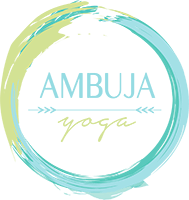Stress is so pervasive in today’s world. Just about every person I meet is struggling with stress and stress management. We have so many demands placed on us daily and in our strive for perfection, for climbing to the top we forget to slow down, to get off of our computers and take time for relaxation. Sometimes as a yoga instructor I feel like I’m expected to be perfect, to have my shit together, when really there are some days where I am literally just hanging on by a thread…. just like everyone else. Sometimes I forget to practice what I preach, so maybe that’s why I am writing this blog post. To remind myself that reducing stress can be utterly simple… it’s just a matter of using the tools we’ve been given.
The physiological signs of stress are the same for everyone: increased blood pressure, increased heart rate, and constricts peripheral blood vessels. How it outwardly manifests varies from person to person. Some react to stressful situations with an overexcited stress response characterized by being quick to become fired up or by being quick to express agitation or anger. Others may react with an under-excited stress response characterized by depression or by shutting down in stressful situations. Your “typical” stress response will determine what kind of activities you need to truly reduce stress. Those with overexcited stress responses will need activities that are quieter, while those with under-active stress responses will need more stimulating exercises.
Maintained high levels of stress are associated with all sorts of health problems including, but not limited to: obesity, heart disease, Alzheimer’s disease, diabetes, depression, gastrointestinal problems, and asthma. High levels of stress may also lead to adrenal fatigue, accelerated aging and premature death. If stress management isn’t part of your daily routine now may be the time to start.
The following is a short list of activities for stress management.
- Focus on your breath. Close your eyes and bring your awareness to your breath. Become aware of the quality of your breath and the texture of your breath. Begin to lengthen your breath. Inhale for a count of 4 or 5 and exhale for a count of 4 or 5 and allow the breath to deepen without strain. If you find it hard to focus on your breath place one hand on your belly and one hand on your chest. Witness the breath for 3-5 minutes. Notice how you feel afterward.
- Move your body. Go for a walk. Practice a few yoga postures (1/2 sun salutations or more) in which you can connect breath with movement.
- Get some fresh air. Eat your lunch outside. Leave your phone in the office. Take a walk around the block. Go for a hike/bike ride before or after work.
- De-clutter your workspace. Having a clean workspace means you aren’t wasting time shifting things around on your desk. It also means that those pesky tasks that are piling up won’t be staring you in the face.
- On the same note. Get organized… perhaps even hire someone to help you become organized. Time management is a huge part of stress management. You’ll be able to spend more time doing the important tasks and less time doing the menial tasks.
- Reach out to a calm friend that is also a good listener and enjoy a little face time…. real face time, not the cell phone version.
- Make time for meditation. Any type of meditation. There are plenty of apps that you can use if you’d like a guided meditation. Some option are listed here in my meditation blog post. You don’t need to meditate for 20 minutes or an hour. Start with 5 minutes and work from there. Taking just a few minutes a day for quiet meditation is proven to work wonders.
- Yoga nidra is another technique that can be used for stress management. There are many recorded classes on YouTube of varying quality and length, I have a downloadable yoga nidra on offer for those that subscribe to my newsletter. You may also find that some of the local yoga studios and wellness centers offer live guided yoga nidras.
- Massage. The power of touch is phenomenal. Whether you visit a professional for a massage or give yourself a 5 minute massage you will feel much more relaxed afterward.
- Drop into a yoga class. A good class will include plenty of movement, breath work, meditation and also time for rest.
Resources:
http://www.mayoclinic.org/healthy-lifestyle/stress-management/basics/stress-basics/hlv-20049495
http://www.helpguide.org/articles/stress/stress-management.htm
- The Ultimate Guide to Surviving (and Thriving) on a Long-Haul Flight ✈️ - December 8, 2025
- Top Women’s Yoga Retreats in Oregon for 2026 - November 27, 2025
- What to Bring for a Yoga Retreat in Patagonia: Your Complete Packing Guide for Tawa Refugio (or Any Adventure in Patagonia) - November 4, 2025

 Ambuja Yoga
Ambuja Yoga 











